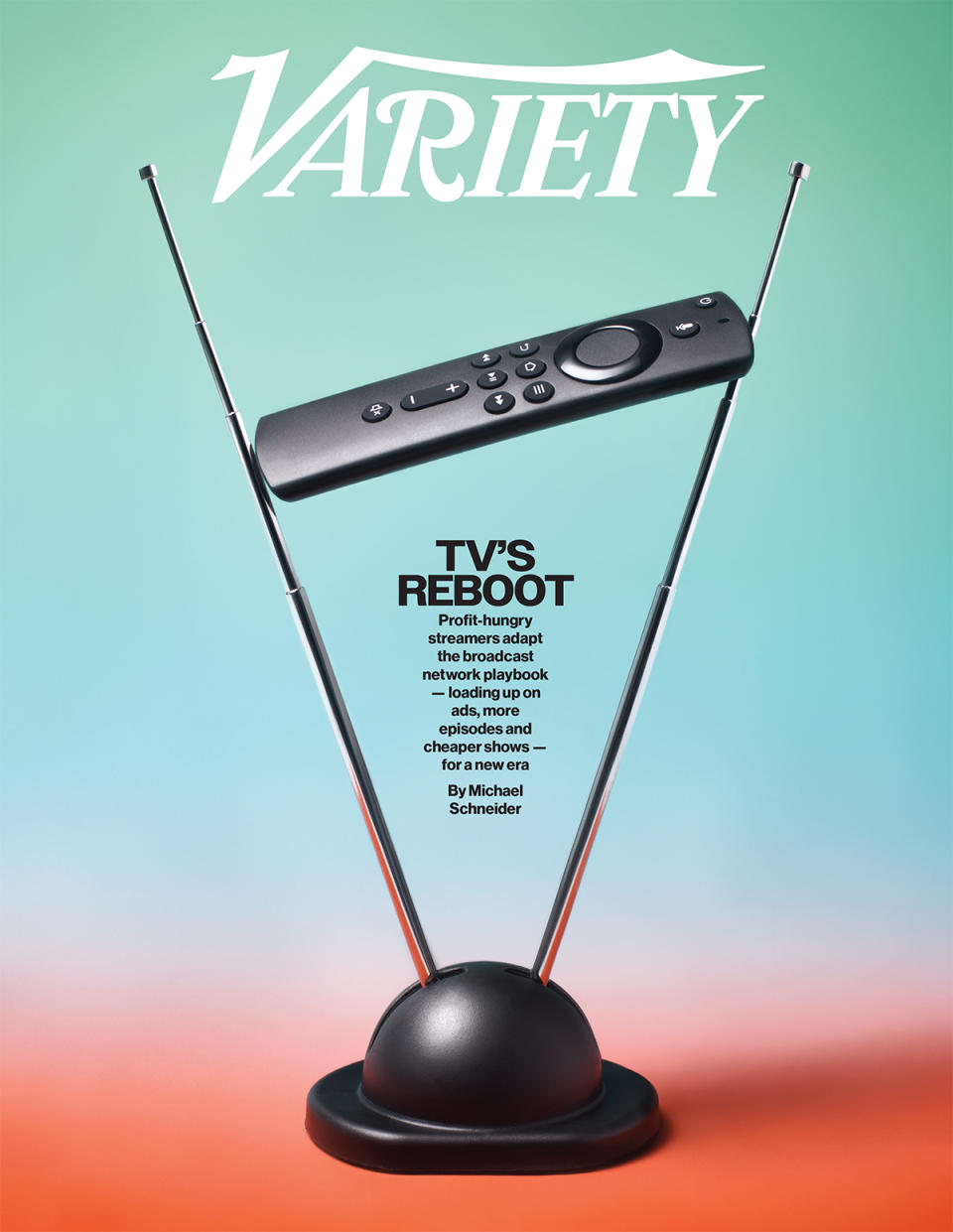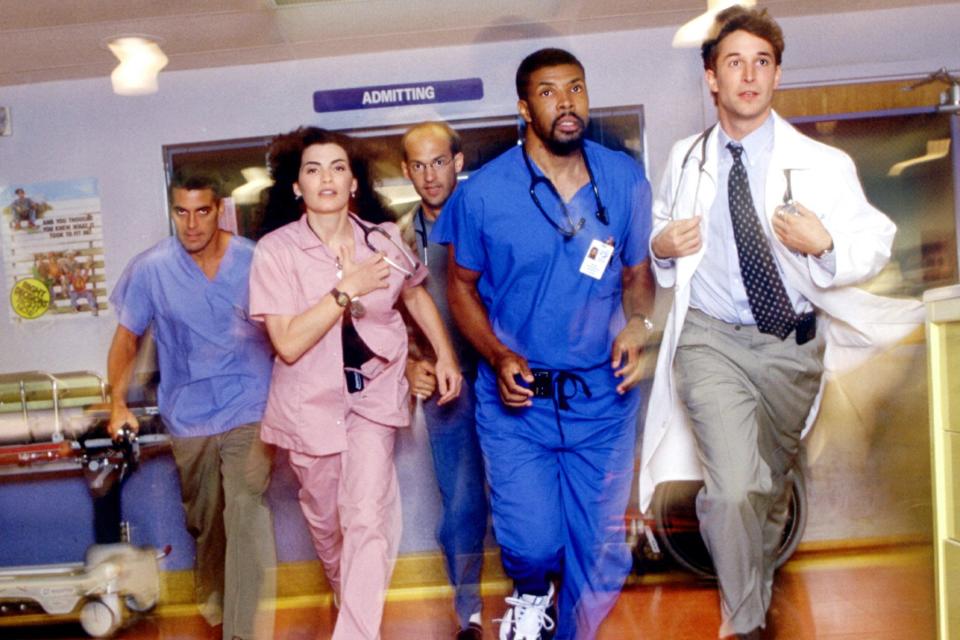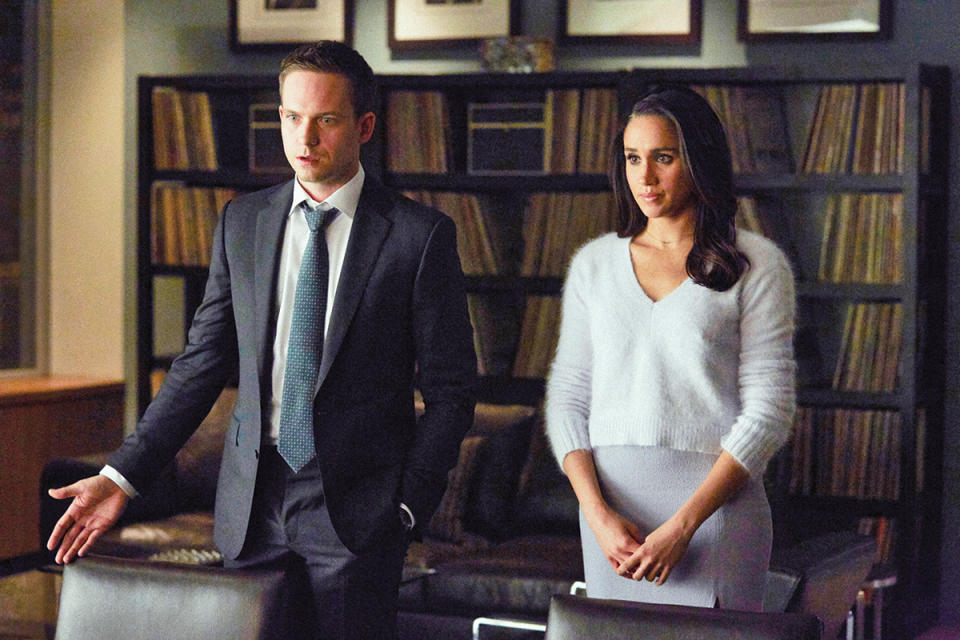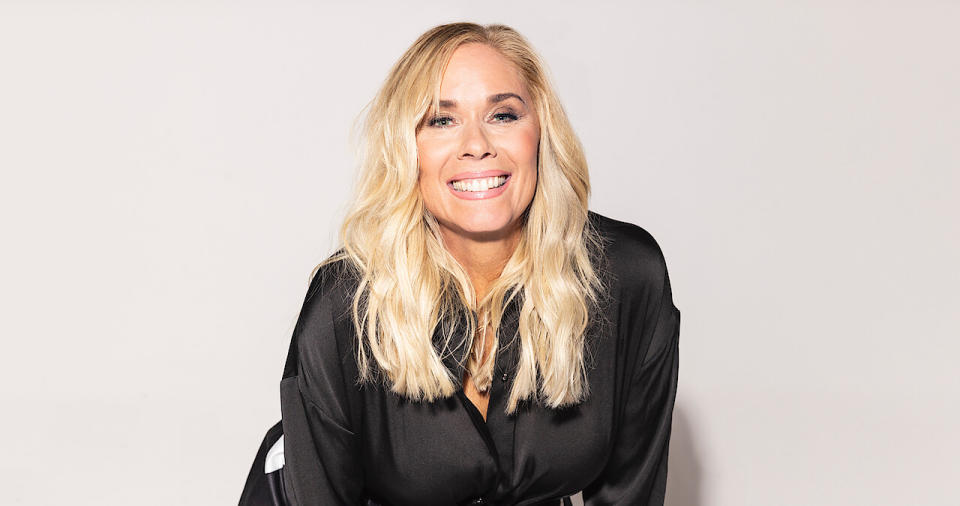The Re-Reinvention of Television: Streamers Dust Off Some of the Old Broadcast Playbook for a New Era

There’s a reason the most successful night of primetime used to be branded “Must See TV.” In the late 1990s, NBC’s “ER” would attract more than 30 million viewers a week in its Thursday 10 p.m. time slot. At its peak, the medical drama came close to commanding a 40 share — meaning that 40% of people watching TV in that hour were tuned in to the Warner Bros. Television series.
Today, such an accomplishment is beyond the reach of any TV program short of the Super Bowl. Viewers now watch TV in very different ways than they did 25 years ago, on their own timetables. Spending big to establish their businesses, streamers ushered in an era of series that came with shorter episode orders, high-wattage A-list talent and pricey production values. For nearly a decade, the traditions of old-fashioned linear TV have paled by comparison to the big-budget, commercial-free fare offered by Netflix, Amazon Prime Video, Hulu and others.
More from Variety
The recent “peak TV” era generated some of the best TV in history. Audiences, critics, awards shows and the rest of the industry shifted a lot of their attention to prestige streamer fare, while the linear worlds of broadcast and cable weren’t seen as sexy. Streamers’ steady output of new six- and eight-episode series orders were meant to draw viewers away from the old guard and get people to sign up for the new — and it worked.
“Must See” turned into “I Binged It in a Weekend, But Now I Won’t See It Again for a Year or Two.” But, as the streaming business has matured, concern over consumer “churn” has grown — and those short orders make it easier for audiences to cancel their subscriptions.
As advertisers, network executives and talent head to New York’s annual network upfronts presentations this week, they’re encountering something unexpected: The streamers that had been quick to destroy the old network TV formula are now looking to emulate it.

That includes embracing TV commercials, which is why outlets like Netflix and Amazon’s Prime Video will be present at upfronts week, a four-day marathon in which the largest networks make glitzy presentations to advertisers at venues like Radio City Music Hall, Lincoln Center and Carnegie Hall. Streamers have joined the fray, doing exactly what the Big 4 networks have done for decades: touting their wares to the advertising buyers who spend billions of dollars in TV spots every year. (CBS gave up its traditional upfronts presentation last year, so they’ll be missing out.)
That’s not the only playbook from the previous TV era that the streamers are dusting off and reinventing for this new age. While it’s not the same as the old cable bundle — a dual revenue stream that the congloms feasted on for decades — the recent news that Disney and Warner Bros. Discovery would bundle Disney+, Hulu and Max together at least felt like a throwback to those days. (And breaking on Tuesday, Comcast revealed that it would also launch a streaming bundle with Peacock, Netflix and Apple TV+ at a deep discount.)
But also at the upfronts, one might notice that some of the new programming the streamers will be showcasing looks a lot like the fare that have fueled the broadcast lineups since the dawn of TV . Live events? Netflix is getting into it in a big way with specials like “The Greatest Roast of All Time: Tom Brady.” Mega sports deals? Amazon has Thursday Night Football, and is reportedly making a big play for the NBA.
And in series, the industry’s aggressive cost cutting over the past 24 months has inspired the streamers to take another look at the program formats that were once seen as vestiges of the pre-streaming era.
At least one network executive — who would rather chuckle anonymously — is amused by it all. “It’s unfortunate that we’ve had tech companies come in, create so much disruption and basically learn the lesson that television learned over the last 50 years, that there was somewhat of a method to the madness,” he says. “Obviously broadcast is dying. But it’s still a good laboratory, you can still get great shows that will become the next library show. There’s been a lot of disruption to basically come back around to reinventing television.”
It might not be 1997 anymore, but some of what fueled the business back then is still relevant. Think long-running medical, police and legal dramas, multicamera sitcoms filmed inexpensively like stage plays, tons of game shows and consistent timetables for season premieres and finales. Turns out, plenty of viewers crave familiarity when surfing for viewing options.

Netflix’s Peter Friedlander, head of U.S. and Canada scripted series, argues that these types of shows have been on the streamers from the start — critics and media writers have just been more focused on the streamers’ prestige entries. “There’s been a really exciting expansion of what you can do on television, and I do think that’s the result of the streaming era,” he says. “I think we will still always have traditional television storytelling, but it’s been expanded. I know that people are watching medical shows and multi cams as well as other types of content… Balance is important.”
The big ticket, Emmy-baiting, high-end shows aren’t going away, of course. But in streaming, they’re now being balanced with original (and not just acquired) procedurals and sitcoms that wouldn’t look out of place on a broadcaster and can stick around a lot longer than three seasons consisting of eight episodes apiece.
“I think that’s a healthy shift,” says Warner Bros. TV Group chairman Channing Dungey. “What’s exciting right now is that there’s a little bit of room for everything. There’s definitely an appetite for some of the slightly more traditional storytelling. People are looking at procedurals in the streaming space in ways that they weren’t before.”
If you need a reminder that viewers still love the kind of “appointment TV” that they devoured on linear decades ago, take a look at the list of most-watched shows on streaming. Many of them come directly from broadcast: “NCIS,” “Grey’s Anatomy,” “Friends,” “The Office” and most recently, “The Resident.” (Yes, a lesser-known medical drama that ran for six seasons on Fox was earlier this month Netflix’s No. 1 show.) Then there’s the 12-year-old basic cable show that destroyed everything in its wake last year, “Suits.”
Those are TV shows — not six-episode dramas with pricey movie icons and budget-busting effects. These are the kind of shows that drove this business since its infancy: Hit programs with staying power, with enough episodes to build a library of 100+ episodes that generations of viewers can continue to enjoy.
And TV’s old guard has continued to churn out the kind of series that viewers in the U.S. really like to watch on the old guard networks. Newcomer “Tracker” is a bona fide hit for CBS, while the “NCIS,” “FBI,” “One Chicago,” “9-1-1” and “Law & Order” franchises remain vibrant. During this week’s upfronts, even the broadcast networks are leaning into more of those kinds of shows, like Fox’s lifeguard actioner “Rescue HI-Surf” and NBC’s multi-cam Reba McEntire sitcom “Happy’s Place.” Plus, here’s the most back-to-basics example: After multi-cam “The Big Bang Theory” spawned the single-cam “Young Sheldon,” that show’s spin-off (“Georgie & Mandy’s First Marriage”) is back to the world of multi.
“Broadcast shows, whether they be procedurals or family-friendly comedies, have never gone out of vogue,” says Craig Erwich, the president of Disney Television Group, which includes ABC Entertainment and Hulu Originals. “And now, these deep libraries, which broadcast shows have a unique ability to become over the long run, are fueling the streaming platforms. Hulu, in particular, you look at the performance we see on ‘The Rookie’ and ‘Grey’s Anatomy,’ where there are new generations of fans coming in and consuming massive amounts of of the shows and enjoying them because they are timeless. It’s a format that continues to be relevant and enjoyable.”
From a business perspective, streamers have also realized that while long-running procedurals that they’ve acquired from broadcast and cable can keep some of their subscribers happy, it would be smart to make a few of their own as a good way to stop the subscriber churn. And those heftier orders don’t need to break the bank.
“We’ve had people call us about family dramas and some of the other things that used to be the staple of broadcast,” Dungey says. “There’s some interest from the streamers on the comedy side for things that are ‘hard funny’; not that the more dramedy-ish comedies are going away. But streamers are realizing that they want to have a more varied portfolio.”
“ER” creator John Wells is just the producer to bring the procedural drama format into a new era. He and fellow “ER” vet R. Scott Gemmill are taking what they did 30 years ago for broadcast and updating it for the streaming age with their upcoming Max series “The Pitt.” Produced through Warner Bros. TV, “The Pitt” is a medical procedural, starring “ER” alum Noah Wyle, and has been picked up for 15 episodes by Max. The show has been built to make financial sense, with no box office titan demanding millions an episode and no outlandish price tag. The show’s budget clocks in at around $5 million an episode — a steal by the standard of recent years.

“It’s an experiment, to some extent,” says Casey Bloys, the chairman and CEO of HBO and Max content. “But if anybody knows how to construct a fairly priced drama that’s well done and gripping, it’s John Wells. The thought was, let’s try 15 episodes and see. Does that keep people engaged for 15 weeks? If you do, that’s a big win.”
Bloys makes no effort to hide the obvious — Wells’ proven track record of delivering high-end drama on a budget was a selling point for “The Pitt.”
“It’s not $20 million an episode with huge special effects or anything like that,” Bloys says. “There are ways to produce a show for a budget that are still compelling and interesting and fun. And particularly the way that John and Scott will do it; those skills were born out of the days of network television, when you’re doing 20 to 24 episodes a year.”
And there’s more of these linear-like shows in the works. Warner Bros. TV is also behind a multi-camera sitcom from Chuck Lorre, starring stand-up comedian Leanne Morgan, which has been picked up for 16 episodes at Netflix (which had previously made a big sitcom pickup with late 2010s series “The Ranch”). Netflix also just ordered its first-ever medical drama procedural, “Pulse.”
“I think what’s happening is a realization that to keep people signed up and to reduce churn, you need shows that audiences get connected to, that show up in a timely fashion or are on long enough the consumer feels that they need to continue to subscribe,” Wells says.
As a storyteller, Wells relishes the larger canvas to tell longer stories about characters’ lives. “I do think there’s a real appetite for that,” he says. “Audiences would like to see those shows, at the quality levels that they expect from a streaming service. And doing that for more episodes certainly is part of the financial arithmetic that makes it valuable for everybody.”

Bloys stresses that just like “ER” back in the day, “The Pitt” is not a medical soap. That’s part of what drew Wells to develop “The Pitt” — that he could take advantage of the freer content restrictions in streaming and lean into the very hard realities of life in an emergency room.
“You don’t have the same kind of broadcast standards that you have to meet,” he says. “One of the things that we got excited about with ‘The Pitt’ is we could go back into telling medical stories that look like what really happens in the hospital and the way in which people interact with the health care system.”
And the longer seasons allow a producer like Wells to amortize the cost of production, lowering episodic costs.
“If you’re trying to be fiscally responsible, the more episodes you have, the better off you are,” notes Dungey. “But it’s more than that: It’s building a library and building that relationship that the audience wants to have with those characters. Our hope here is that over the course of 15 episodes — which is double the amount of most streaming shows these days — by the time you get to the end of that season, the audience feels connected to and familiar with these characters, and anxious for the second season to come.”
Best of Variety
Sign up for Variety’s Newsletter. For the latest news, follow us on Facebook, Twitter, and Instagram.

